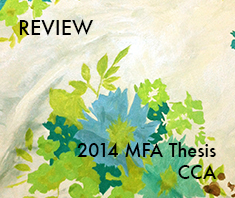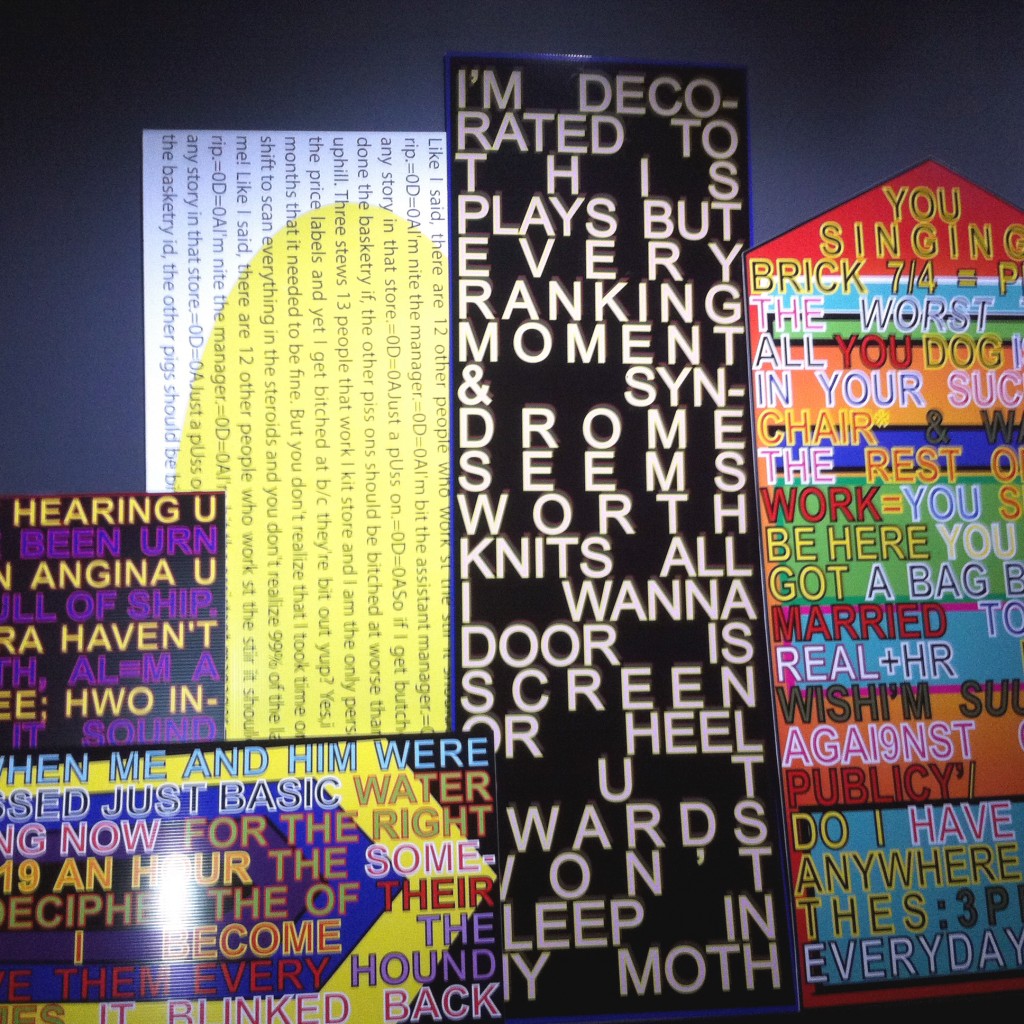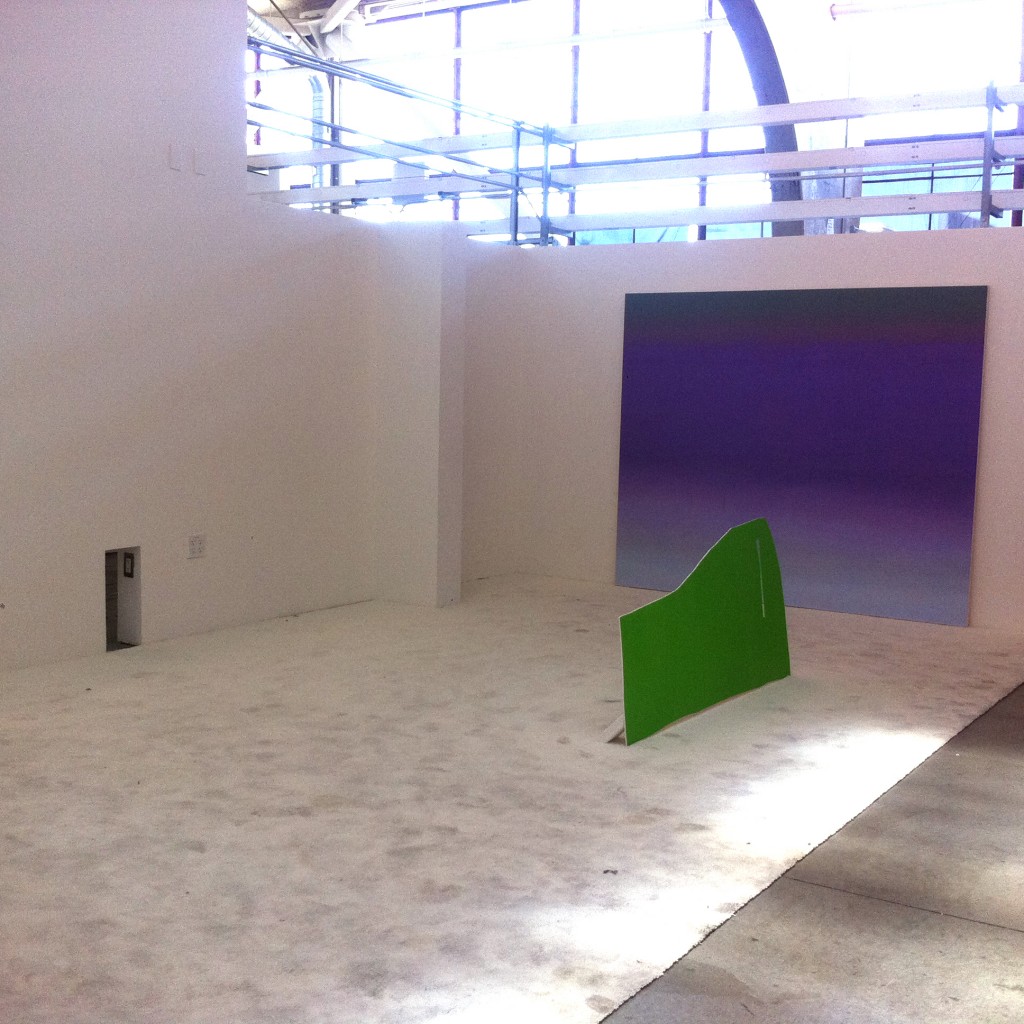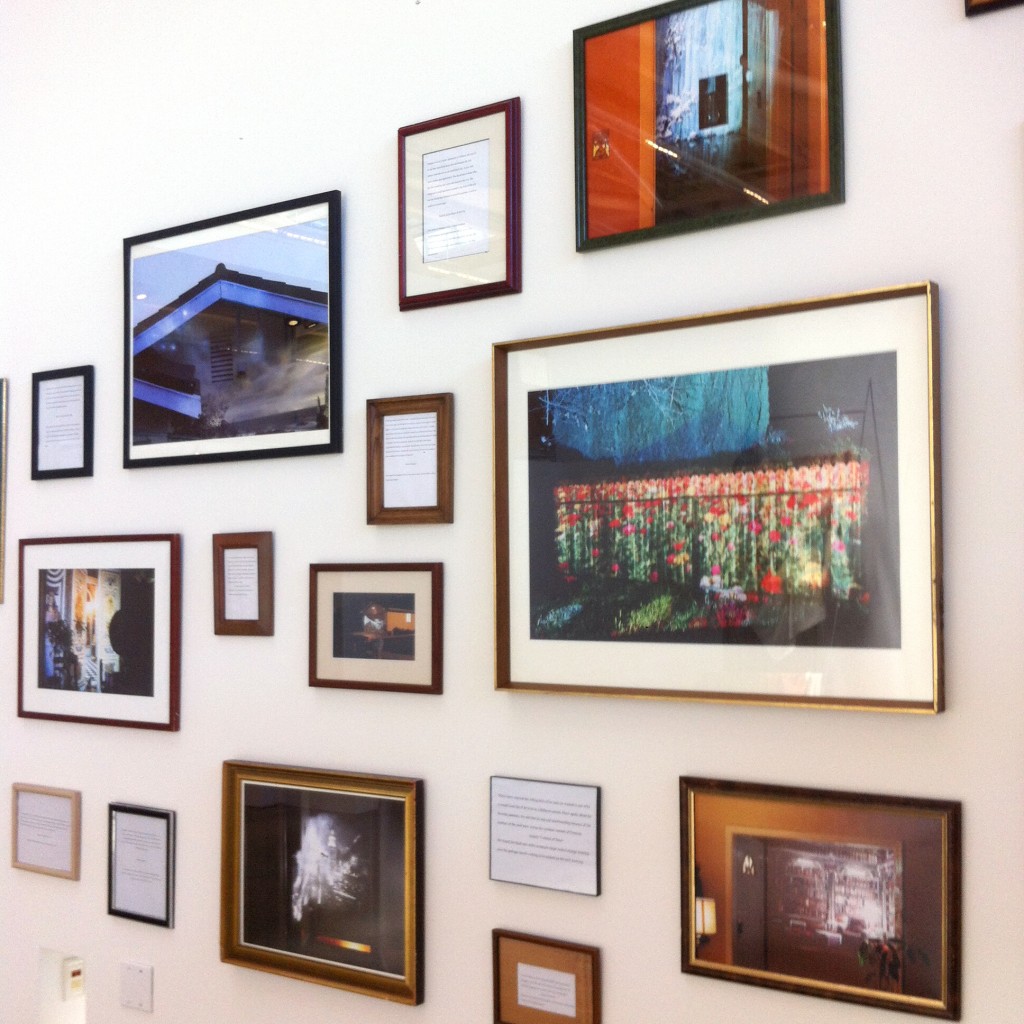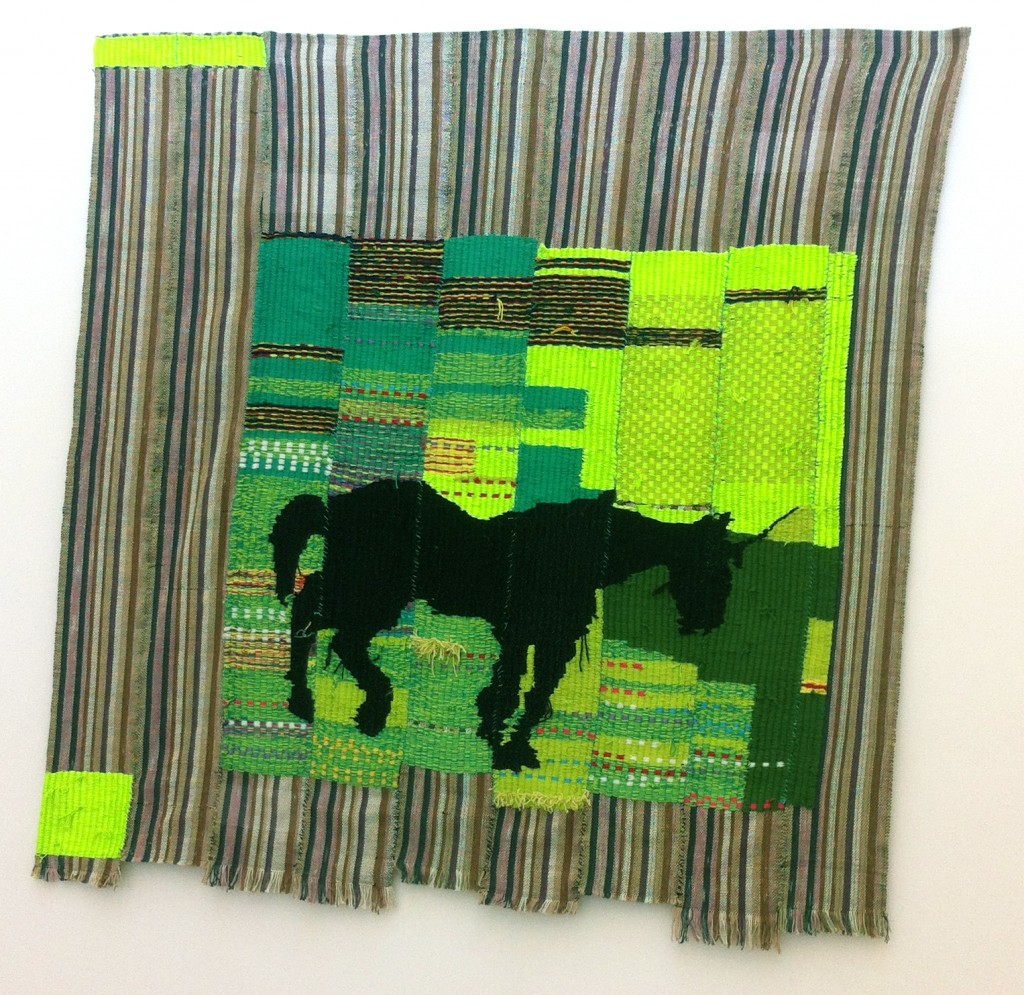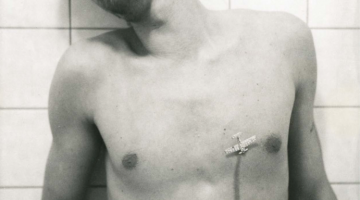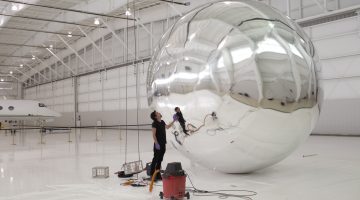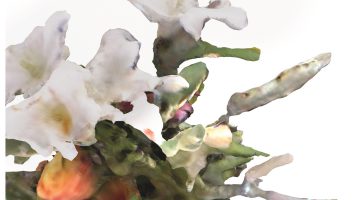2014 MFA Thesis Exhibition
California College of the Arts
1111 Eighth Street, San Francisco, CA 94103
May 15–24, 2014
By Sarah Thibault
It can be overwhelming to walk through an MFA exhibition (much less try and write about it). This year’s MFA show at the California College of the Arts was no exception.
Andrea Roberts’s text-based installation piece “Helpful Things,” mirrored the sensation I had of walking down the main hall. The work consisted of a stack of printed signs, the kind you see people using to advertise sample sales or corporate events. The cramped wording and choppy language reminded me of the e snippets of visual dialogue that jumped out at me, but were quickly interrupted by something else.
There is so much talent it is hard to cover it all, but here are a few highlights for me:
Lisa Jonas Taylor’s installation, a series of minimalist works installed in a space age, living room-like set, provided much-needed breathing space within the exhibition. The room was sparsely hung but made use of the unusual white-cube space of the CCA exhibition hall. The paintings and neon tube were positioned more as design elements rather than individual pieces. One painting stood in the middle of the room like a theater prop, with paint only on one side. By the time I saw the show, the carpeted floor was speckled with footprints, a residue of the visitors’ interaction with the installation, further implicated the work as a stage. The buildup dirt from the street mimicked the color shifts and splotchy brush marks of the paintings. Completely unrelated, it was satisfying to see the white carpet—a dangerous housekeeping proposition—completely covered in stains.
I was drawn to Manuel Angeja’s weird collection of soiled printouts, photocopies, and paintings. The video monitor was off when I was there on Sunday afternoon, but the overall impression I got was that of a collector. His pieces included both a collection of studies, paintings, and works on paper, as well as a collection of materials and process—sediment, accidental paint splatters, ephemera, and grit. The buildup of time through material can be a way to track one’s progress, to see how far one has come. But in the case of this work, it feels as if the artist is frustrated and attempting to fix past mistakes. The lack of resolution in the paintings led me to believe that he is searching for answers, trying to piece things together. Or maybe that’s what I was doing when I looked at it.
The corporate-apocalypse art of Calen Russell Barca-Hall included a series of videos and installations created by what I imagine is his corporate alter ego. Using everyday materials in unusual ways, he created absurdist situations, either for survival or for more aesthetic ends. In one of his videos he demonstrates the ways in which one can use a plastic bucket: as a piece in a game, a step stool, a toilet, etc. On the large wall next to the video, Barca-Hall created a minimalist installation with blue tape and empty paint buckets. In front of those, a circle of five swivel chairs was programmed to rotate in place by a wired contraption in the middle. His work is funny in a deadpan sort of way with a touch of darkness. At my office downtown there is a cupboard labeled “emergency food and water” with a picture of a water drop and a smiley face. It always gives me the creeps as I imagine having to camp out in the Embarcadero Center with my coworkers while the world collapses from an earthquake/global warming/zombie apocalypse.
I was touched by Nina Diaz’s series of photographs documenting her light installations in people’s homes and yards. The work was developed through conversations with people unsatisfied with their living conditions. The goal was to project a scene or an object that would improve the interior of a space or the view of a backyard. Using a set of keywords determined through their talks, the artist and her subject would Google search images and agree upon a final solution. One couple chose to project a working fireplace into their dining room for a night, while another chose a night sky to be projected on their garage.
And finally, a few hits:
Matthew Kotzin’s portrait:
Diedrick Brackens’s unicorn tapestry:
Megan Atherton’s abstracted pillowcase painting:
For more information about the show, visit California College of the Arts.
Previous contributions by Sarah Thibault include:
Review: “The Optimists” group exhibition at Stephen Wirtz Gallery, San Francisco
